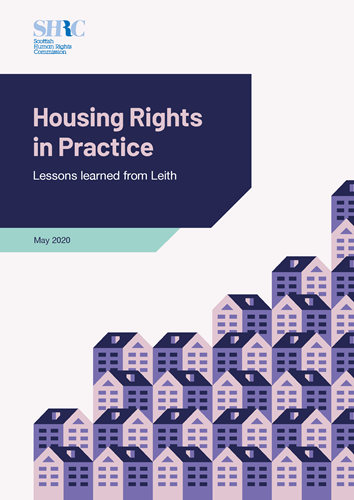Right to Housing
The right to housing should be seen as the right to live somewhere in security, peace and dignity.
United Nations Committee on Economic, Social and Cultural Rights
The right to adequate housing was defined by the United Nations Committee on Economic, Social and Cultural Rights in 1991 in its General Comment 4. The right to housing means:
- Legal security of tenure: everyone should be guaranteed security of tenure.
- Availability of services: everyone should have available facilities and infrastructure such as drinking water, energy for cooking, heating and lighting, sanitation and washing facilities, food storage, refuse disposal, site drainage and emergency services.
- Affordable housing: costs associated with housing should not threaten people’s ability to afford other essential goods and services, including protection against unreasonable rent levels or unreasonable rent increases.
- Habitable housing: this includes adequate space and protection against the cold, damp, heat, rain, wind or other threats to health or structural hazards and ensuring physical safety.
- Accessible housing: housing should be accessible to everyone without discrimination. Priority should be given to people who are the most marginalised, including homeless people and those who are inadequately housed. Special measures should be taken to ensure adequate housing for disabled people, older people, those living in areas vulnerable to natural disasters, and others who require them.
- Location: housing should be in a location which allows access to employment options, healthcare services, schools, childcare and other social facilities. It should not be located on or near polluted sites.
- Cultural adequacy: housing policy and practice must appropriately enable the expression of cultural identity.
International human rights law recognises that these rights might not be fulfilled all at once. However, they must all be “progressively realised”. This means governments must take steps over time to improve things. It also means they must use the maximum resources they can, and target spending on those most in need.
Housing Rights in Practice
Housing Rights in Practice was a project run by the Commission and others as part of SNAP - Scotland’s National Action Plan for Human Rights. It ran from 2015 to 2019.
The project aimed to empower people to tackle substandard housing and living conditions by using human rights. It was delivered in partnership with Edinburgh Tenants Federation and Participation and the Practice of Rights.
Read a short overview of the project, including how it worked and what it achieved. You can also view a summary presentation about the project.
Watch our concluding film about the project below.
Lessons Learned from Leith
Our final report from the Housing Rights in Practice Project captures the steps taken throughout the project, evaluates the impact achieved and shares the lessons learned along the way.
Publications and Resources
There are no news stories under this section.
View other news

